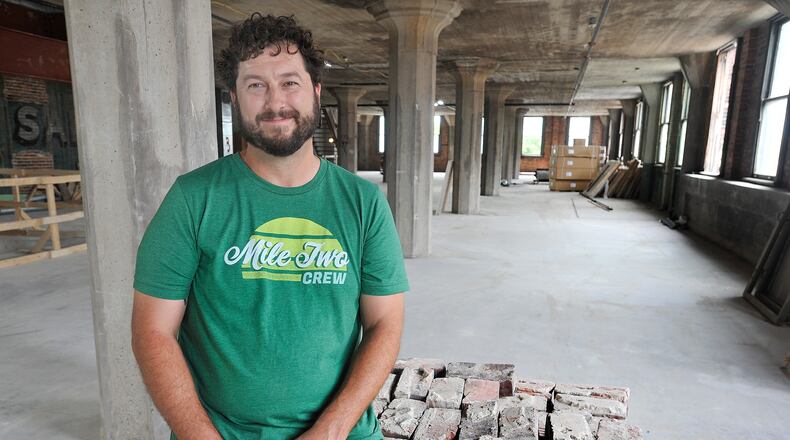Mile Two will cross the 100-employee mark this month, having grown from a trio of employees in just five years.
Work arrangements have changed, obviously. But the fast-growing (and increasingly well funded) technology start-up has hired people from Maine, Oregon, Texas and Northern Ohio in the COVID-19 era. And there’s no looking back.
“We felt like, hey, we can actually do this well,” said Jeff Graley, Mile Two president and co-founder with Jorge Sanchez. “Let’s hire some fully remote people.”
The company designs and builds custom software for businesses, including startups, Fortune 500 companies, and the US government.
Mile Two plans to move into The Manhattan in the first quarter of 2021. The company still intends to have a presence in the Tech Town Business Park and 444 E. Second St., Graley said.
“We’ll still have the other sites,” he said. “444 might be the the most likely (we’ll) move out of completely.”
Late last year Woodard Development said the company was committed to taking two floors in the six-floor, 55,000-square-foot building at 601 E. Third St., which was being re-branded as “The Manhattan,” a nod to Dayton’s role in the Manhattan Project. (The building was historically known as the J.K. McIntire building.)
That “Third Steet Tech Corridor” is unmistakable, Graley said, drawing a line roughly southwest from Wright-Patterson Air Force Base, down Springfield Street, to Third, all the way to Stratacache Tower downtown.
“That whole corridor now is tech companies,” he said, citing Tangram Flex, JJR Solutions, BattleSight Technologies and others. “It’s significant. Not all, but it’s a significant footprint of tech companies.”
“Five years ago when we started, none of that was there,” he mused.
Tech Town remains the “center of excellence” collaboration space for Mile Two and its partners at the Air Force SBIR/STTR (Small Business Innovation Research/Small Business Technology Transfer) program.
The latter is a $650 million effort to secure promising private technologies among businesses and to share Air Force technologies ripe for commercialization.
“We’ll still have a strong presence there,” Graley said of Tech Town, adding: “I do know they’re mostly remote if not fully remote, the way a lot of folks are.”
There’s an upper bound on everything, but Graley is uncertain about what Mile Two’s ceiling might be.
“When you look at the way the world is going, the ability to take cutting-edge technology like machine learning, AI (artificial intelligence) capabilities and other tech breakthroughs, and to be able to prototype those, and get those into the real world quickly, I think that’s going to be in even higher demand as technology advances,” Graley said.
Smart people will always be in demand, he added.
About the Author


